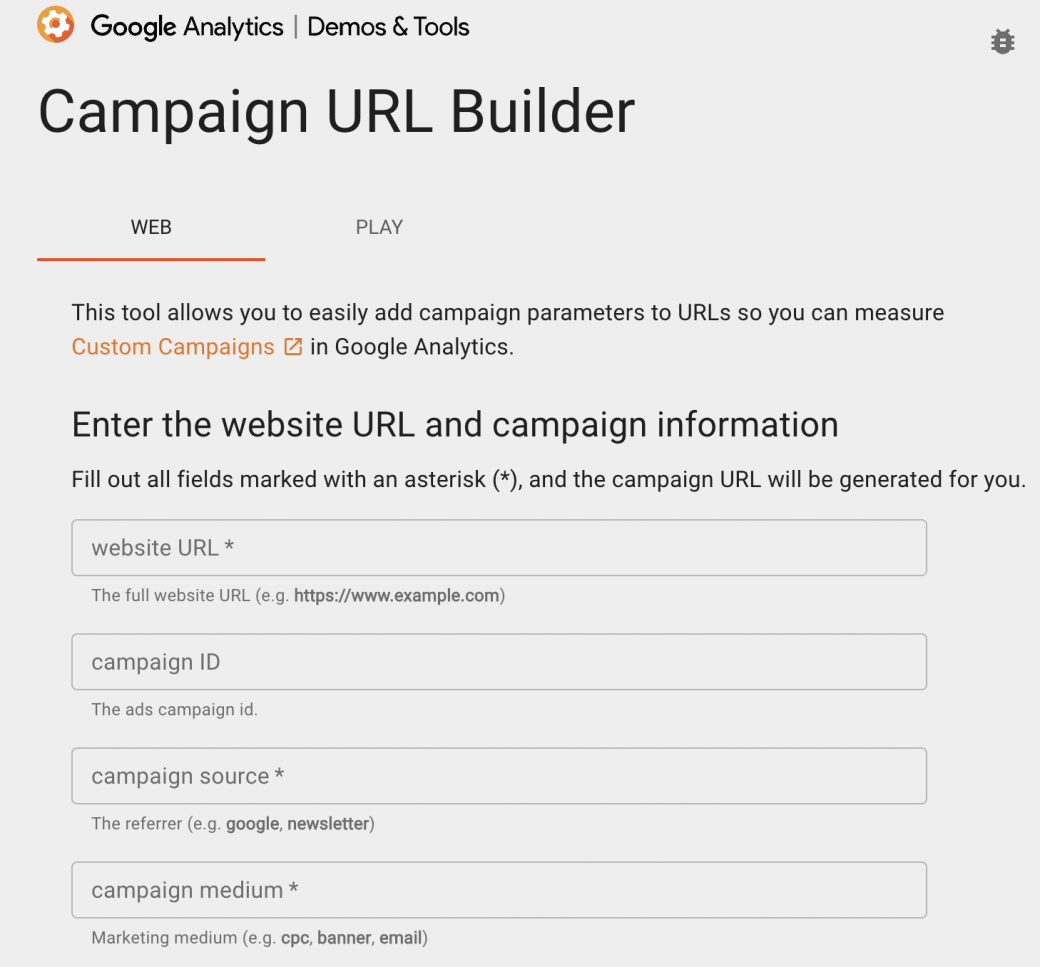![How to Create a Digital Marketing Budget [With Template]](https://img.shgstatic.com/clutch-static-prod/image/resize/715x400/s3fs-public/article/cbefcf801b6c486982d781482f9a654f.png)
![How to Create a Digital Marketing Budget [With Template]](https://img.shgstatic.com/clutch-static-prod/image/resize/715x400/s3fs-public/article/cbefcf801b6c486982d781482f9a654f.png)
Updated January 2, 2025
UTM links are important for companies looking to attribute website traffic to certain marketing channels and efforts. By being able to distinguish which activities are generating the most traffic, leaders can make informed decisions on future marketing campaigns. To attain these benefits, you must have UTMs properly implemented and tracked.
UTMs (urchin tracking modules) are codes attached to the end of URLs that help users determine where website traffic is coming from. UTMs can be added wherever links are added, so attribution can be made as granular as the marketing strategy calls for.
For instance, a marketer could use UTMs to track traffic from organic social posts, email marketing efforts, influencer collaborations, PPC ads, SEO, other landing pages, and more.
Looking for a Digital Marketing agency?
Compare our list of top Digital Marketing companies near you
From that perspective, the use cases for UTMs are endless. When you factor in the innate value of UTM data, it’s a no-brainer not to try them out.
Learn how to implement UTMs step by step with the ‘Ultimate UTM Guide With Google Analytics'
UTM parameters allow marketers to measure the effectiveness of their online campaigns with greater accuracy and insight than through other means.
The optimization of traffic tracking with UTMs benefits companies in that it makes attribution more accurate to real-time performance of campaigns across multiple channels. With this information, users better understand the best channels and those that need work for maximum ROI.
In this way, UTMs provide valuable insights into customer behavior and preferences that would otherwise be impossible to capture.
Over time, digital marketing as an industry has become more complicated and technical. UTMs simplify this by allowing users to differentiate traffic sources by medium, campaign content, source site, and terms used in search engine queries.
With all of this information in hand, marketing leaders can locate campaigns that aren’t producing ideal results and eliminate them from the program. In turn, they can reallocate this ad spend to the efforts that are performing particularly well — or try something new entirely. UTMs make quick pivots possible, which is a necessity for testing.
Finally, UTMs make reporting on marketing efforts a breeze. With UTMs, marketers have the ability to point out bright spots in existing strategies and recommend actionable areas for improvement to internal and external stakeholders alike.
Generic traffic metrics, like impressions or clicks as performance indicators, have the potential to be vanity metrics, meaning they don’t necessarily give a clear picture of true ROI. UTMs, however, are an accurate avenue for measuring campaigns on Google Ads, Facebook Ads, and performance across social media platforms.
UTMs contain 5 different parameters, or UTM codes, to track and attribute performance properly.
Take a look at this example campaign URL that breaks down each of them:
In this example, the hypothetical ‘Bagel Shop’ website runs an ad using campaign tracking with a UTM and its following parameters: source, medium, campaign, term, and content.
These parameters detail to the bagel shop exactly where referral traffic is coming from and will validate certain channels and advertising strategies over others.
Google Analytics is a popular and well-liked tool for tracking UTMs and related conversion events. While it’s widely used, Google Analytics does require UTM best practices to be followed to work optimally.
Abide by the following tracking best practices to succeed with UTMs in Google Analytics.
Consistency is key in UTM tracking, and naming conventions will get your UTM links there. Having naming conventions will keep your data clean and easy to analyze.
When defining your naming conventions, here are some advertising industry best practices to keep in mind:
UTM builders generate the UTM code, so you don’t have to.
URL builders help users create UTM codes without knowing the specific syntax necessary to manually write UTM links.
Remember this example from earlier?
Even if you know how to write UTM links manually, it can be tedious to type all of this out. Plus, you’re far more likely to mistype something if you draft URLs manually.
That’s why it’s recommended that you turn to tools like Google’s campaign URL builder.

With this tool and other URL builders, users simply plug in the unique name they choose to give each parameter along with the target URL, generating a UTM link. This will keep your team free of user error and ensure consistency.
Always use lowercase letters for your UTM tags to avoid discrepancies in your data.
Tracking tools tend to be case-sensitive, which has the potential to yield ample inconsistencies if you’re not paying close attention to case. In these cases, uppercase letters could lead to inaccuracies in your reports, which makes attribution more complicated or impossible.
While this may not be true of all analytics tools, committing to lowercase is a good habit to get into for the sake of consistency alone.
When setting your source and medium tags, be as specific as possible.
Instead of merely using a general search parameter, ask yourself if you could benefit from more specificity to pinpoint the exact source of your traffic.
For instance, using the parameter “social” as the source parameter may seem intuitive for collecting traffic data coming from social networks.
However, a more specific parameter could be written by dictating the exact social media platform the traffic is coming from. In this case, a more specific parameter could be “linkedin” or “facebook.”
Long, messy URLs can deter users from clicking on your links. While UTMs are meant to help internal teams track traffic, it’s important to be cognizant of user experience and customer-facing material.
To alleviate clunky links, consider using URL shorteners like Bitly. These tools can create cleaner, more user-friendly links that still include your UTM parameters.
UTM tracking isn’t necessarily a set-it-and-forget-it operation. Auditing existing UTM parameters over time will help you keep relevant and accurate codes (which means relevant and accurate data). For instance, during this endeavor, try removing outdated or unused parameters to keep your data clean and uncluttered.
Additionally, testing UTMs does require data analysis. Regularly examine your data and make adjustments. One can do this via A/B testing to further refine the tracking strategy and improve performance.
There are some important best practices for implementing UTMs and using them to track the success of marketing campaigns. However, once you have them in place, there’s no limit to what you can do with them to ensure that attribution is prioritized and accurate across channels.
![How to Create a Digital Marketing Budget [With Template]](https://img.shgstatic.com/clutch-static-prod/image/resize/715x400/s3fs-public/article/cbefcf801b6c486982d781482f9a654f.png)

